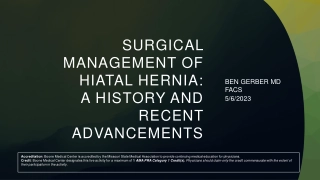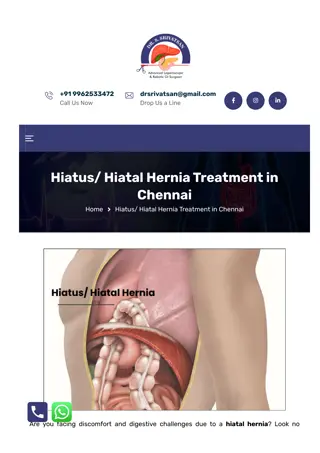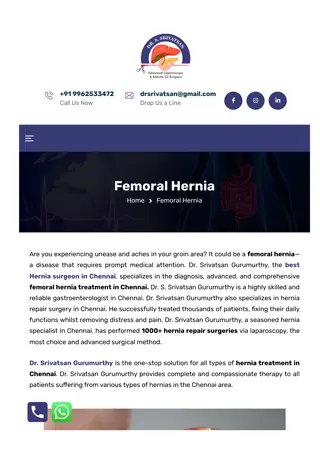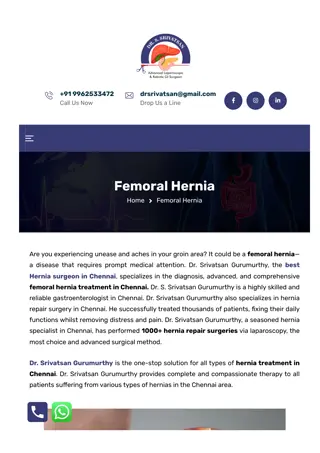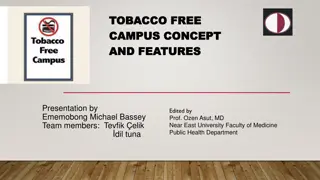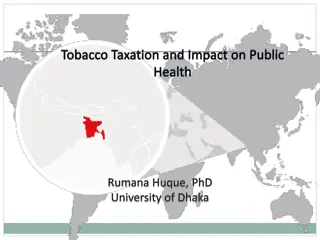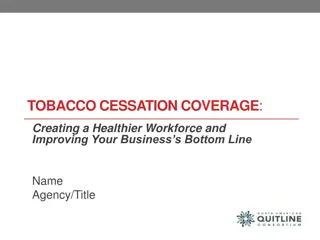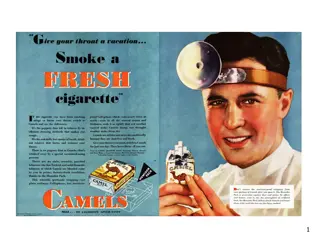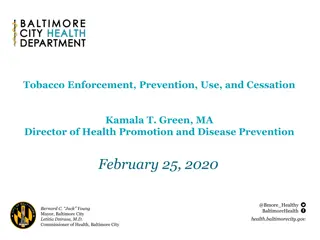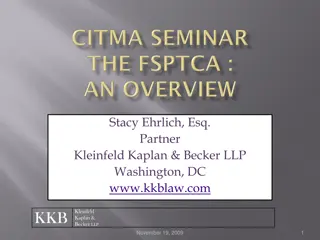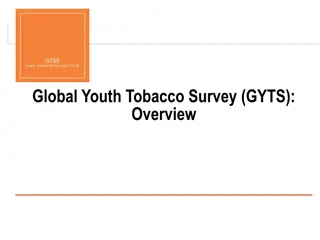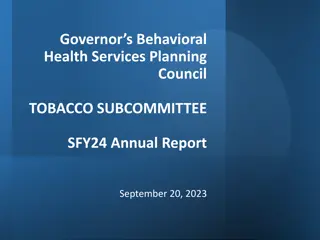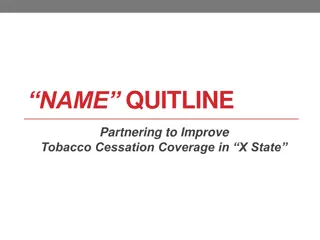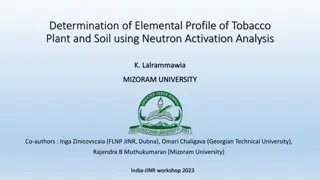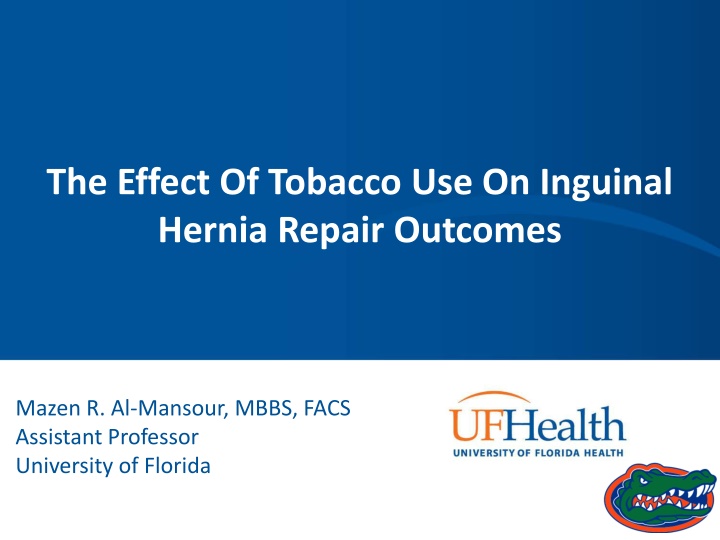
The Impact of Tobacco Use on Inguinal Hernia Repair Outcomes
This study investigates the effect of tobacco use on outcomes following inguinal hernia repair, exploring complications and risks associated with smoking. Results and patient characteristics are analyzed, shedding light on the importance of tobacco cessation for improved surgical outcomes. The study highlights the potential benefits of quitting smoking in relation to post-operative complications and recovery after hernia repair procedures.
Download Presentation

Please find below an Image/Link to download the presentation.
The content on the website is provided AS IS for your information and personal use only. It may not be sold, licensed, or shared on other websites without obtaining consent from the author. If you encounter any issues during the download, it is possible that the publisher has removed the file from their server.
You are allowed to download the files provided on this website for personal or commercial use, subject to the condition that they are used lawfully. All files are the property of their respective owners.
The content on the website is provided AS IS for your information and personal use only. It may not be sold, licensed, or shared on other websites without obtaining consent from the author.
E N D
Presentation Transcript
The Effect Of Tobacco Use On Inguinal Hernia Repair Outcomes Mazen R. Al-Mansour, MBBS, FACS Assistant Professor University of Florida
Background Is tobacco a risk factor? Does tobacco cessation improve risk?
Literature 1/2 versus Smoking is a modifiable risk factor Failure to quit smoking is associated with complications Landin. Surg Enodsc. 2015
Literature 2/2 versus Complication rate 3% Smoking might be a modifiable risk factor Is this clinically important? Lindstr m . Hernia. 2007
Introduction Association versus
Methods Current smoker (n = 2,239) Elective inguinals (n = 19,866) Former smoker (n = 4,064) Total (n = 93,851) Excluded Ventral No operation No 30-day follow up Concomitant procedure Never smoker (n = 13,563)
Methods Overall 30-day complications Wound Mortality Respiratory Reoperation Cardiovascular Readmission
Results Patient Characteristics Total N=19866 Current Smokers N=2239 Former Smokers N=4064 Never Smokers N=13563 Age, years 62 56 68 61 Male (%) 92 94 92 91 BMI, Kg/m2 26 26 26 26 ASA (%) 1 18 10 8 22 2 57 59 55 57 3+ 25 31 37 21 Comorbidities Diabetes 7 6 11 6 COPD 3 9 6 1
Results Hernia / Op Character Total N=19866 Current Smokers N=2239 Former Smokers N=4064 Never Smokers N=13563 Recurrent (%) 10 10 10 9 Bilateral (%) 23 23 22 23 Approach (%) Open 35 31 38 35 Lap 35 34 36 34 Robo 30 34 25 30 General anesthesia (%) 87 93 89 86
Results 30-day Outcomes (unadjusted) % Total N=19866 Current Smokers N=2239 Former Smokers N=4064 Never Smokers N=13563 Overall complications * 8 9 9 7 SSI 0 0 0 0 SSO* 5 6 6 4 SSOPI 0 0 0 0 Resp complications 0 0 0 0 Card complications 0 0 0 0 *P < 0.05
Results 30-day Outcomes (unadjusted) Total N=19866 Current Smokers N=2239 Former Smokers N=4064 Never Smokers N=13563 Readmission (%) 1 1 1 1 Reoperation (%) 0 1 0 0 Mortality (%) 0 0 0 0 Eura-HS -10 -15 -11 -10 *P < 0.05
Results 30-day Outcomes (adjusted)
Conclusions No association smoking & 30-day outcomes in inguinals Long-term outcomes ?
Why is this important? ACCESS TO HERNIA CARE

